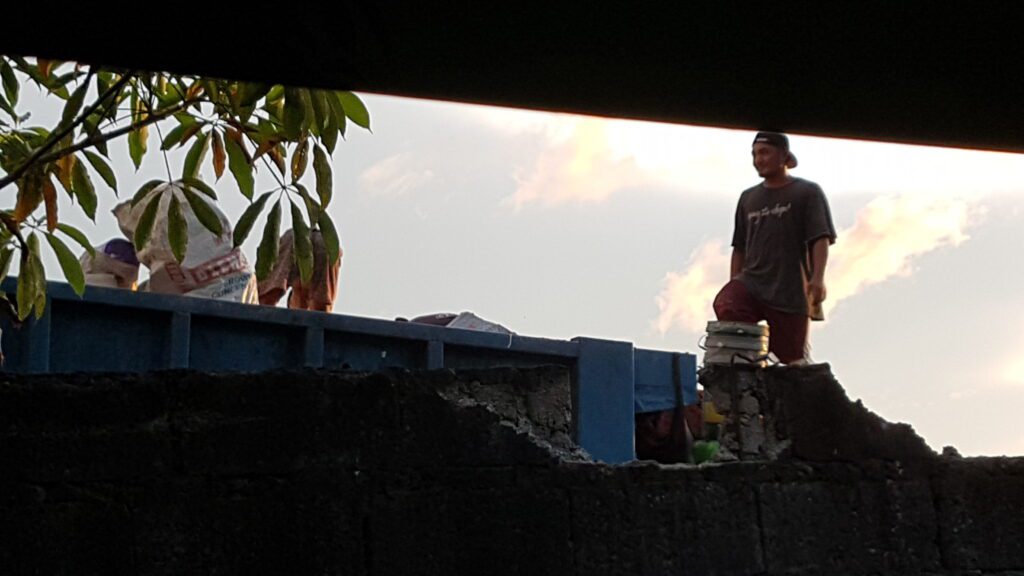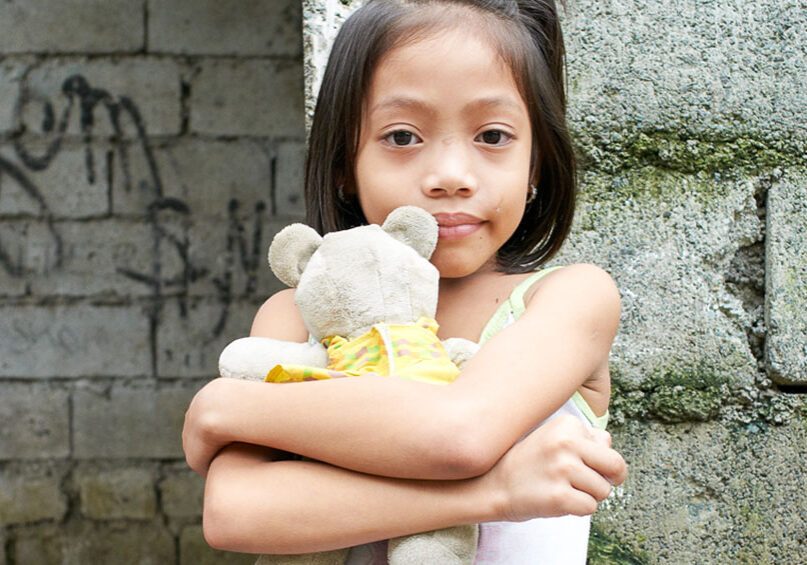Life for children working on the Rubbish Dumps in Payatas
History of The Payatas Dump in the Philippines
The Payatas dump was the largest dump in Manila, a city of 12 million people in The Philippines.
Before the Payatas dump was established in the 1970's, the area was just a barren ravine surrounded by farmland. The dump became the largest open dump in the Philippines taking up an area of 13 hectares.

Tragedy struck in 2000 when a landslip at the Dump killed at least 260 and possibly 1,000 people. Payatas Dump was closed after this but the local inhabitants asked for it to reopen as without it they had lost their livelihoods and anyway the city had no other facilities for handling rubbish. Conditions slowly improved in the years following this. Children under 14 could no longer work on the dump, the rubbish piles at the dump were re-sloped to reduce the risks of landslides and methane extractors were brought in to stop the gas generated by organic material creating spontaneous fires on the Dump.
Despite this the site remains dangerous and especially after tropical rains the rotting garbage stinks.
Anna's Family
As a mother, Anna takes it in turns with her husband to work at the Dump and care for their 2 children but often they are left with her grandmother or the neighbours while she works.

Most scavengers tend to specialise in collecting certain items such as card, glass drinks bottles or, like the Reyes in drinks bottles and other plastic. Scavengers carry their finds from the dump and sort and clean them (perhaps washing them in the dirty streams nearby) often with the children helping. This is filthy work.
The support from the Grapevine Outreach charity programme is just enough to allow her child to go to school. The saleable items will then be sold to the local junk man who pays a minimal amount per kilo of recyclable material and sells it on to be processed elsewhere.
.
Living by the Payatas Dump
Because the pay is so poor with no money for transport, workers at the dump have to live close by, often in shacks made from rubbish, squatting illegally on land at the edge of the Dump. There is very little space and there may be up to 15 people living in a single room with not enough space for everyone to lie down.

Drinking water has to be bought and there is no electricity- an old rechargeable car battery is sometimes used to get a dim light in the evening. Often there are no toilet facilities so its a ‘bag it and chuck it’ system with waste piling up as there is no collection service
Government efforts have sought to improve living conditions and new development areas have been built which at least gives access to basic water, drainage and electricity but without any way to earn a living there the level of poverty often remains desperate. Despite this many families remain without the basics.
.
Closing of Payatas Dump
In 2017 the Dump was closed as studies showed that it was polluting the water table. Since then all the 6,000 rubbish truck deliveries a day are supposed to go to San Isidro, a smaller dump some distance away where other scavengers work.
With this closure, many of the Payatas workers lost their livelihoods as it is too far for them to travel. Some have retrained. Eska went to a training course put on by Children of the Dump and learned to weave. Nowadays she uses rags from the dump to make simple dishmats. By making 4 a day she can earn 80 pesos (about £1) a day.

Sorting The Rubbish and San Isidro Dump Today
Today the rubbish is sorted before it goes to the dump. Rubbish trucks are paid to tip their full loads in private yards where scavengers get first pickings of the rubbish looking for metal, plastics and other items. Even fast food scraps are found and eaten.
These scavenger families often live in shacks in the filthy yards spending their lives here. Not surprisingly children and adults regularly suffer infections and illnesses
After this, the rubbish is taken by truck to the heavily guarded San Isidro rubbish dump. More scavengers have to pay for the privilege of access to the Dump to go through the rubbish again.
It is back breaking work in the heat of the day collecting and sorting rubbish trying to avoid the rats and getting cut on sharp objects. After a shift they carry their recyclables to sell to rubbish processors for just a few pesos.
These workers then have long walks home and after an inadequate meal fall asleep ready to repeat the process every single day. If you don’t work on any day, maybe you are sick or the torrential monsoon rains fall, then there is no money for food..

You can make a difference to the Children of the Dump
By donating you can make a direct difference to the Children of the Dump by giving them the opportunities that education provides and making a better life in the future. Fulltime professional social workers help to ensure that the children are able to maximise the benefits of the education ensuring a strong home life.


Support our work
There are many ways that you can help transform young lives in Manila.
See how sponsorship helps children
Thanks to a sponsor, many of the children were offered the opportunity to enjoy a special carefree holiday day out to a pool.



How to Support a Childs Education
You can make a Regular Monthly Donation, Sponsor a Child monthly or just make a One Off Donation.
You can also support the Children of the Dump by Fundraising, leaving us a gift in your Will, you can even contribute just by shopping online with thousands of retailers without spending anything extra.

Monthly Donation
Make a Regular Monthly Donation of an amount that suits you that helps all the children with the ESSENTIALS programme.

Sponsor a Child
You can sponsor a child Monthly through Cashew Early Years, Grapevine Outreach or the Mango Tree House.

One off Donation
You can make a One off Single Payment donation if a Regular Monthly Donation is not right for you.
